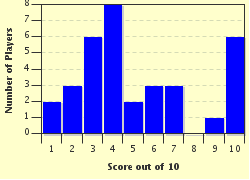Quiz Answer Key and Fun Facts
1. Who was Australia's "Golden Girl of Athletics" during the 1950s?
2. This man is generally considered to be Australia's greatest all-round cyclist who won Olympic gold, six-day races and competed in the Tour de France.
Who was this exceptional rider?
3. He is the first man to have won the British Open Championship in three consecutive years. Who is this icon of Australian golf?
4. He started a generation of Australian middle distance runners. He never won gold at the Olympics but held the world record for 1500m and the mile. Who was this athlete?
5. At 17 he was the "Golden Boy of the Pool" at the 1956 Olympics. Who was this swimmer who after retiring as an athlete became an actor, sports commentator and marketing executive?
6. During the 1950s Australian tennis players dominated Grand Slam events. Who was the player who won a total of 13 Grand Slam events (singles, doubles and mixed doubles) plus three Davis Cup wins, all in a span of just 5 years in the 1950s?
7. He became Australia's first recognised World Boxing Champion but retired aged 24 after successfully defending his World title three times. Who was this boxing great of the 1950s?
8. He became the first Australian to win two World Championships in any form of motorsport. Who was he?
9. He won a silver medal in the Olympics then went onto to win six consecutive Diamond Challenge Sculls at the Henley Royal Regatta from 1957-1961. Who was this great and sometimes eccentric sculler of the 1950s?
10. Born in Wagga Wagga and after a successful riding career in Australia he went to England and rode 2,161 winners and was crowned Champion Jockey in the UK on four occasions. Who was this great ambassador for Australian racing?
Source: Author
zambesi
This quiz was reviewed by FunTrivia editor
gtho4 before going online.
Any errors found in FunTrivia content are routinely corrected through our feedback system.

